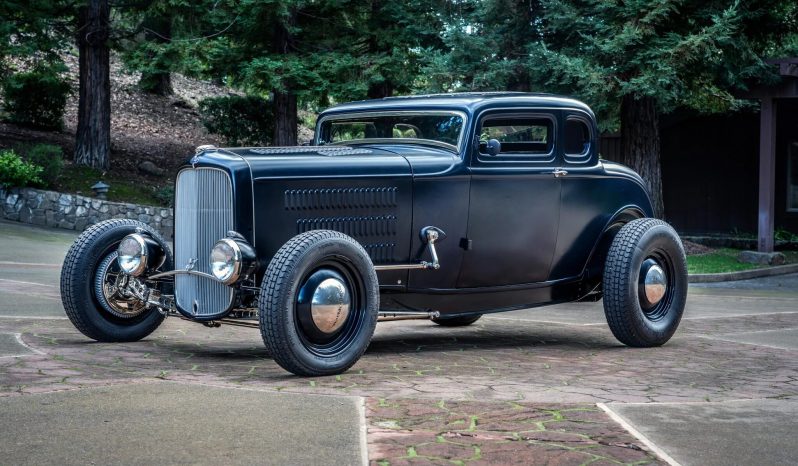The Ford flathead V8 features a French engine block, S.Co.T. supercharger, and Navarro cylinder heads. The Elgin camshaft was profiled to provide low-end torque, and the dual carburetors are topped with a shark-style air scoop. A PerTronix electronic ignition conversion kit has been installed along with a beehive oil filter housing, which has been modified to operate at full pressure and flow. An electric puller fan cools the radiator, and a brass fire extinguisher serves as the expansion tank.
Power is sent to the rear wheels through a Tremec T5 five-speed manual transmission and a quick-change rear end sourced from Hot Rod Works. The alternator is mounted to the differential housing and is driven by a concentric pulley attached to the input shaft. A driveshaft loop has been added to the chassis. Long-tube exhaust headers flow into a wrapped dual exhaust system, and gold heat shield material has been applied to the underside of the cabin.
The louvered aluminum belly pan is constructed as a single unit and mounts to bosses built into the frame.
A binder of build records will accompany the car along with handwritten notes and user manuals for various components.
The instrument panel was sourced from a 1932 Pierce-Arrow and served as the centerpiece for the build. It houses custom-designed Classic instrumentation consisting of a 100-mph speedometer, a 6k-rpm tachometer, and gauges for oil pressure, alternator output, coolant temperature, and oil temperature. Gauges for air/fuel ratio, boost pressure, and fuel level are concealed within the left glove compartment along with a clock.
The six-digit odometer shows 6k miles.

































